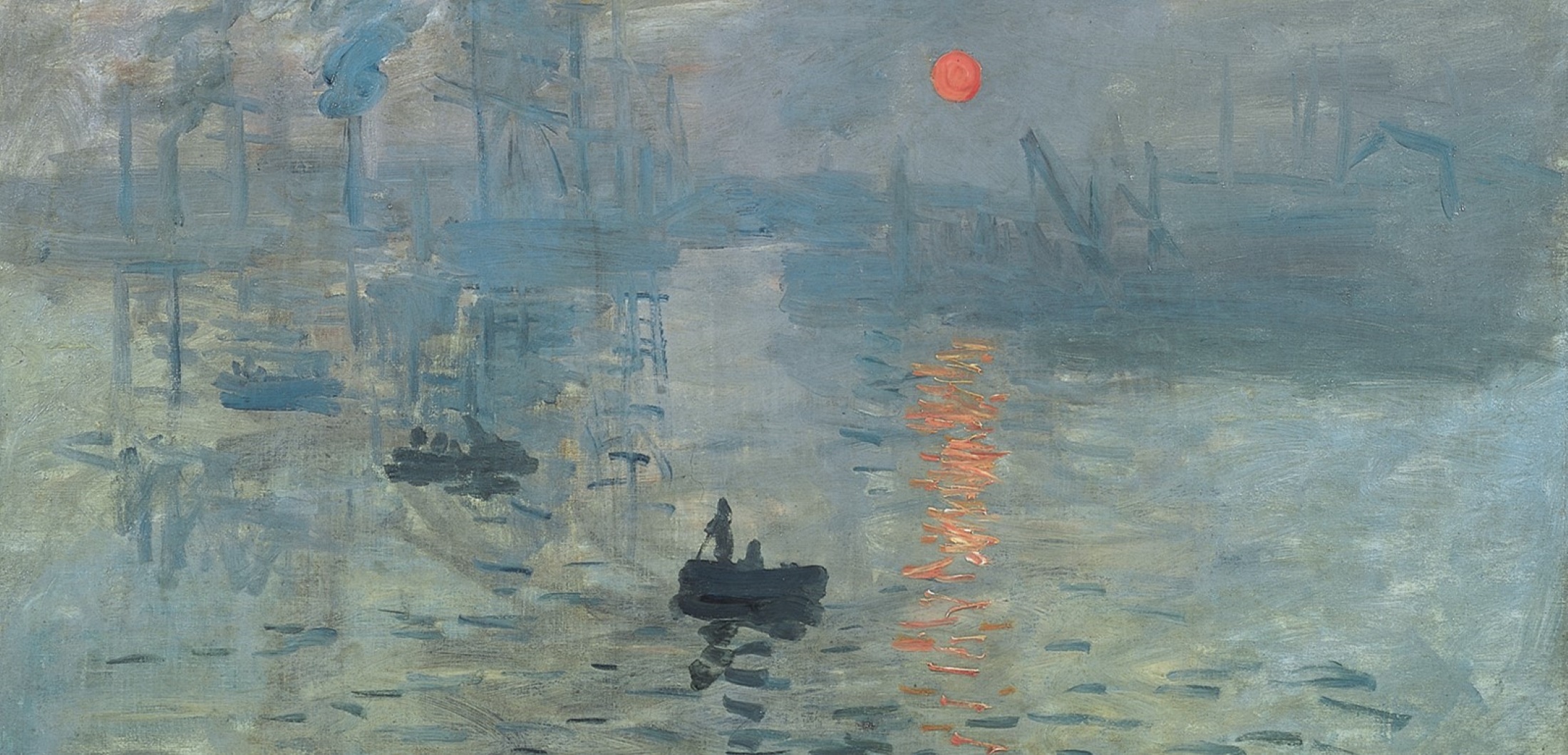
10 Famous Paintings by Claude Monet
Everything changes, even stone,
Monet once wrote in Rouen. In the history of art, few names resonate as profoundly as Claude Monet's and his style and that of his fellow Impressionists was unlike anything seen before.
Before you head to the Claude Monet immersive exhibition in London, discover what made the artist’s style and technique so groundbreaking and some of his most iconic paintings.
Claude Monet's style and technique
Claude Monet (1840-1926) is regarded as the father of Impressionism. Not only did he help found the movement, but his painting ‘Impression, Sunrise’ (1873) became the inspiration for its name. Monet used loose brushstrokes to capture the fleeting effects of light, atmosphere, and colour in his paintings, and this innovative approach paved the way for modern art's departure from traditional norms.
Claude Monet’s most famous paintings
1. ‘Impression, Sunrise’ (1872)
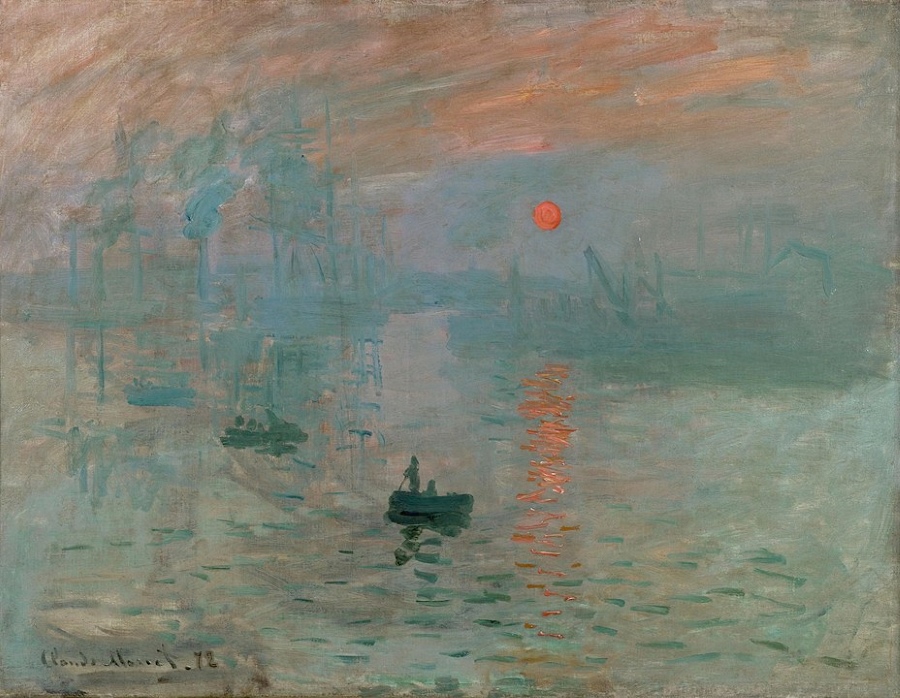 Impression, Sunrise, Claude Monet, 1872
Impression, Sunrise, Claude Monet, 1872As stated above, ‘Impression, Sunrise’ is widely claimed to be the inspiration for the Impressionist movement’s name. The painting is of the port of Le Havre, in Normandy, and depicts a hazy harbour full of boats ready to dock. The tones are muted, with a palette of greys and blues adding to the dreary feel of the scene. The bright sun is a focal point of the painting, as it so vibrantly contrasts the muted shades of the French harbour.
Although renowned today, this intensely atmospheric piece was not typical of Monet’s work at the time and of Impressionist work as a whole. The restrained use of colour is an obvious sign of this, as well as its lack of wider societal analysis.
2. ‘Woman with a Parasol – Madame Monet and Her Son’ (1875)
 Woman with a Parasol – Madame Monet and Her Son, Claude Monet, 1875
Woman with a Parasol – Madame Monet and Her Son, Claude Monet, 1875Also known as ‘The Stroll’, this summery piece depicts Monet’s first wife Camille-Léonie Doncieux and their son Jean in Argenteuil. This painting showcases both Monet’s skill as a portraiture but also his aversion to conventional portraits, as the facial features in this piece are blurred and delineated. Painted outdoors and from a low angle, ‘Woman with a Parasol’ captures a certain naturalness that many artists take years to master, yet only took Monet a few hours. The light use of colour coupled with the animated brushwork makes the piece seem spontaneous in nature; a snapshot into daily life for the family.
3. ‘Rouen Cathedral’ (1892 – 1894)
‘The Rouen Cathedral’ was a series of paintings capturing the changing appearance of the cathedral throughout the year. Monet observed how lighting could impart such distinctly different characters to the building depending on the time of day and the type of weather. The most famous of the series is ‘Rouen Cathedral, Full Sunlight’, although the whole collection tells a beautiful story of visual sensation. It also allowed Monet to explore, and realise the importance of light on a subject, and it became a defining characteristic of his work.
4. ‘Water Lilies’ (1896 – 1926)
 Water Lilies, Claude Monet, 1915 © Musée Marmottan Monet
Water Lilies, Claude Monet, 1915 © Musée Marmottan MonetMonet created around 250 water landscapes in under thirty years, with the water lilies being some of his most famous and recognisable pieces. They range in viewpoints and focal points, with some featuring bridges and trees, whilst others omit the horizon line altogether and focus solely on the lilies and the water they sit upon. The variety of blues and purples are rich in colour and tell a story of gentle movement and life hidden beneath the murky depths.
5. ‘Camille’ (1866)
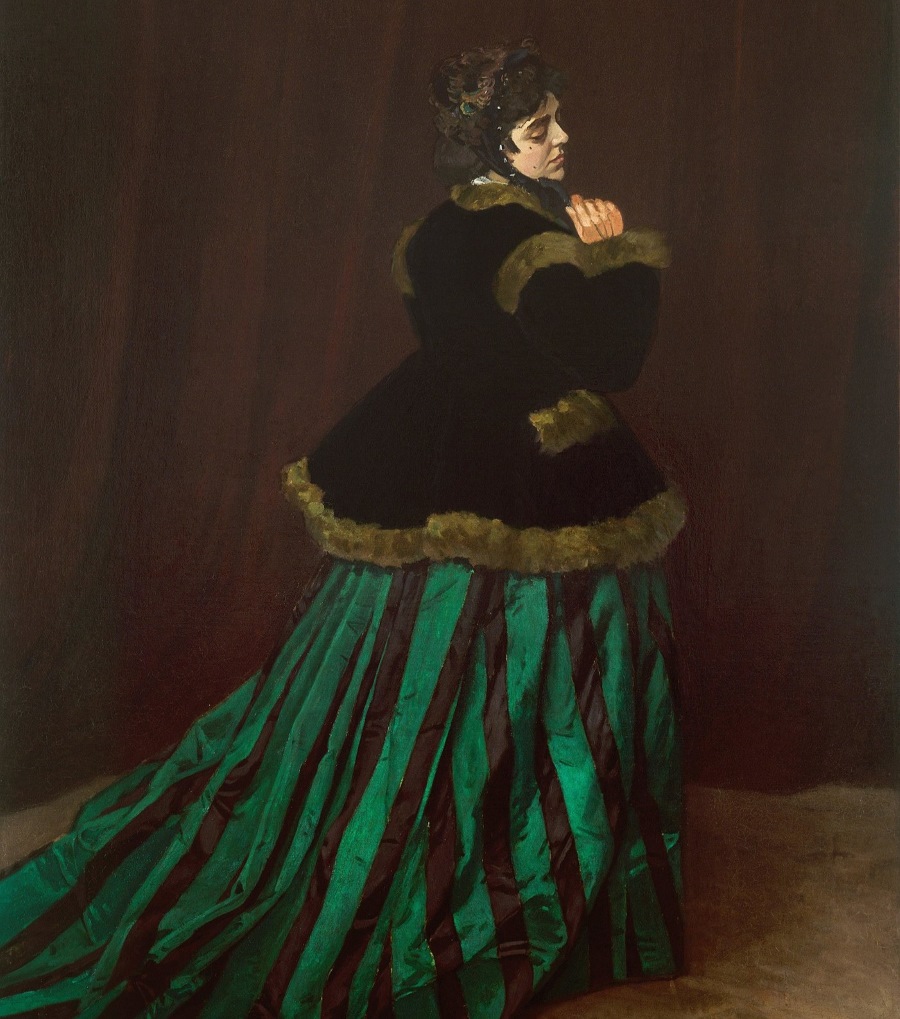 Camille (details), Claude Monet, 1866
Camille (details), Claude Monet, 1866‘Camille’ or ‘The Woman in the Green Dress’ is another Monet’s painting of his future wife and a favourite model Camille Doncieux, yet this is much more classic in style. In this large-size portrait, Camille’s features are more realistic and the viewpoint is more standard. This piece was well received by critics at the time, which is plain to see in the detail and movement of the vibrant green fabric that drapes on the floor and is cut off by the frame. The downcast expression is engaging and the overall composition of the piece stirs intrigue and thought in the viewer.
6. ‘Houses of Parliament’ (1900 – 1904)
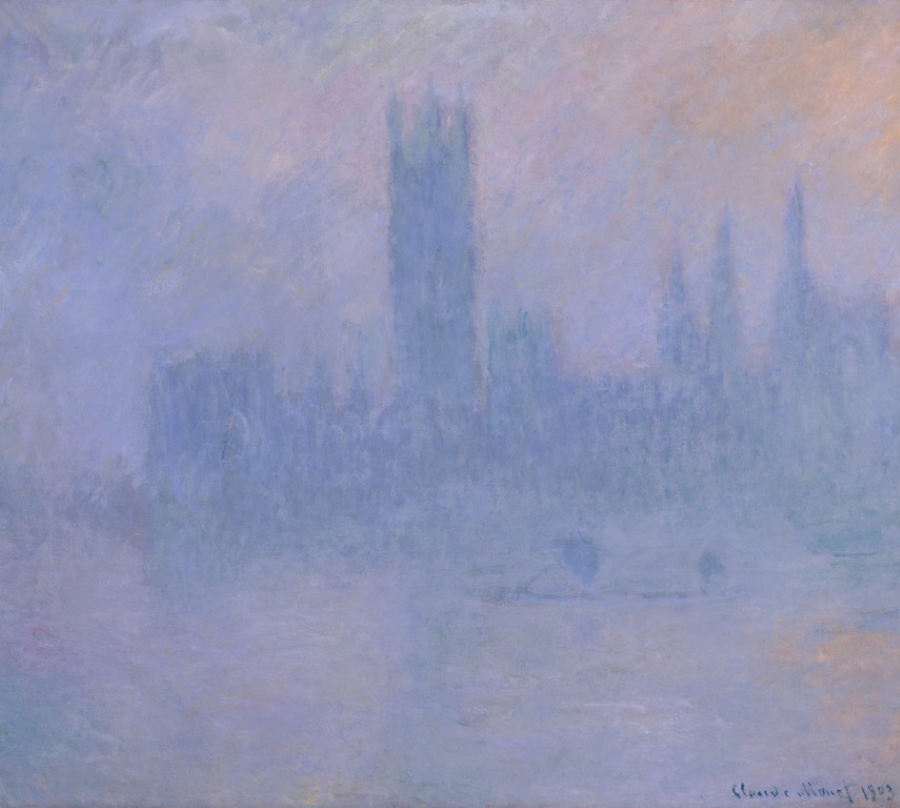 Houses of Parliament in the Fog, Claude Monet, 1903 © High Museum of Art
Houses of Parliament in the Fog, Claude Monet, 1903 © High Museum of ArtComposed of dark colours and harsh brushstrokes to create bristling and stormy depictions of parliament, Monet explored again how one scene could change so drastically from one day to the next, or even within several hours, as a result of lighting and weather. His renditions of parliament were usually clouded by thick fog, creating mystery and ominousness.
7. ‘Japanese Bridge over a Pond of Water Lilies’ (1899)
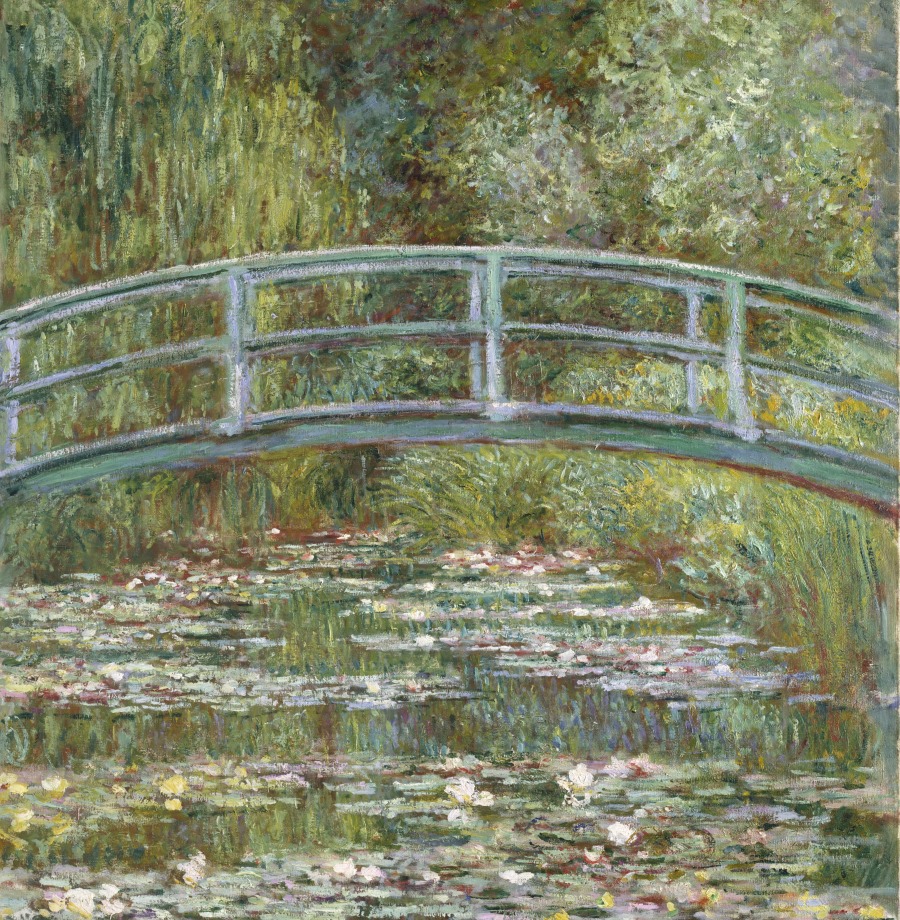 Japanese Bridge over a Pond of Water Lilies, Claude Monet, 1899
Japanese Bridge over a Pond of Water Lilies, Claude Monet, 1899It is well known that Monet was heavily inspired by Japanese art, and so it makes sense that he added a Japanese bridge to his beloved garden in Giverny and featured it in his artworks. Monet was an avid admirer of Hokusai, purchasing some of his prints, and was captivated by the new aesthetic of Japanism in the 1880’s. This specific landscape is lush and vivacious with copious greenery, shrubbery, and foliage. The naturally vibrant colours and textured brushstrokes help further amplify the life of this oasis.
8. ‘The Saint-Lazare Station’ (1877)
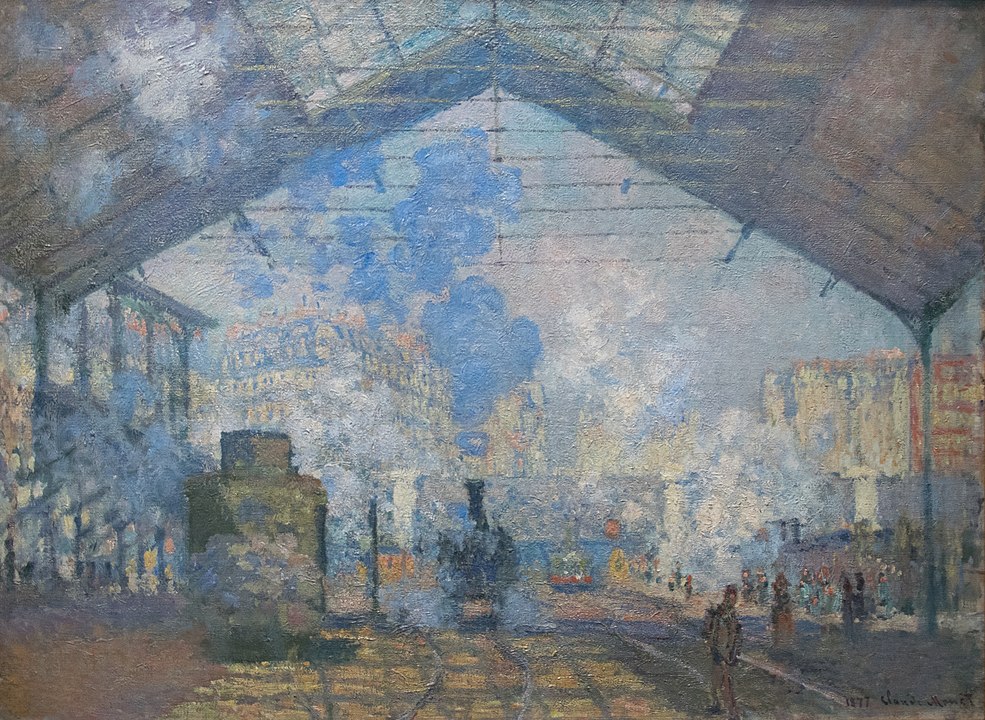 The Saint-Lazare Station, Claude Monet, 1877
The Saint-Lazare Station, Claude Monet, 1877Different from Monet’s usual natural landscapes, this railway scene is industrial, composed of steam, iron fixings, and large locomotives. This oil painting was typical of the Impressionist movement, as a common motif of impressionism was a fixation on industrialism and modernism. The dark colours of the trains in this scene, coupled with the intense clouds of steam help dwarf the figures in the painting creating a physical contrast that helps add layers and depth to the station.
9. ‘La Grenouillère’ (1869)
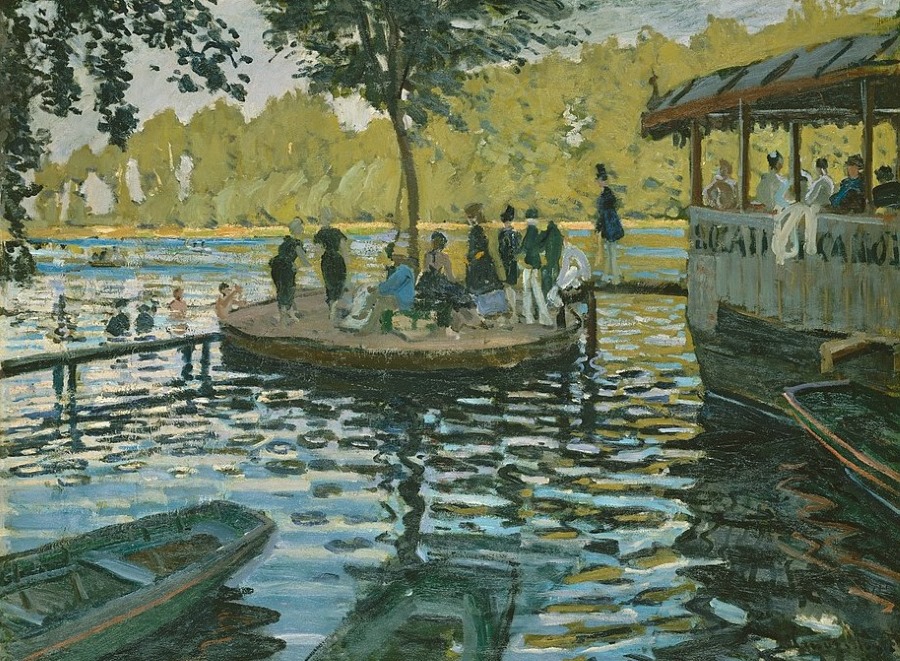 La Grenouillère, Claude Monet, 1869
La Grenouillère, Claude Monet, 1869Here Monet has painted a floating restaurant and boat-hire found along the river Seine, with bathers and tourists enjoying the shade and summer weather. His repetitive brushwork is accomplished and brings life to the water. He also captures the sunlight perfectly, exploring how it bounces off the deep ripples in the river.
10. ‘San Giorgio Maggiore at Dusk’ (1908 – 1912)
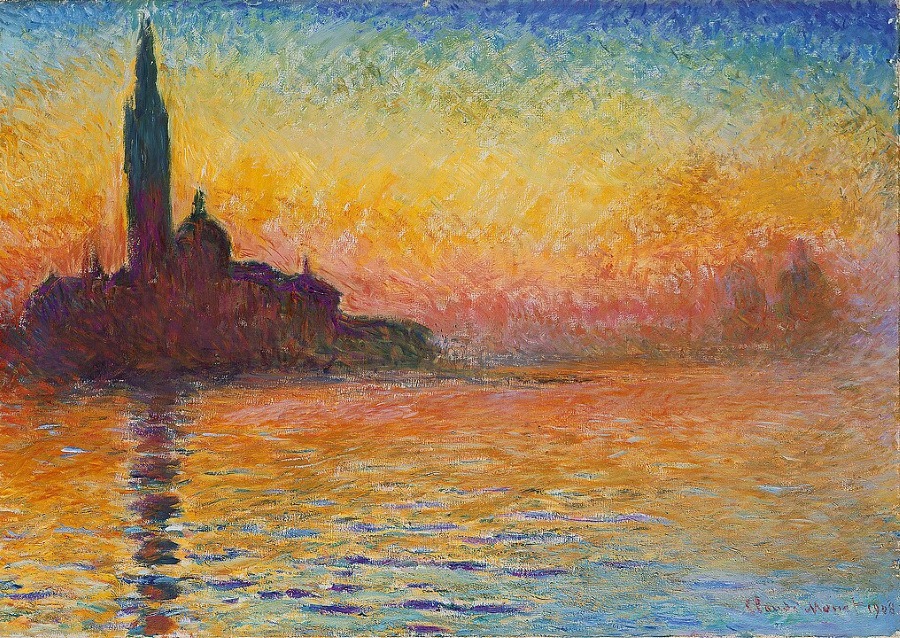 San Giorgio Maggiore at Dusk, Claude Monet, 1908
San Giorgio Maggiore at Dusk, Claude Monet, 1908One of Monet’s most vibrant paintings, this dusk scene forms part of a series of view of the monastery-island San Giorgio Maggiore in Venice It’s an explosion of colour that portrays the beauty of a sunset on the rivers of Venice, offset by the dark and towering church on the horizon. A rainbow of dusk, this piece perfectly captures Monet’s awe for the natural world, and his deftness with the brush.
Monet’s masterpieces continue to evoke wonder and introspection, reminding us of life's fleeting beauty.
For more insight into the history of art, don’t miss our ultimate list of the 10 most famous artists of all time.
Photo Credits: © Wikipedia Commons
